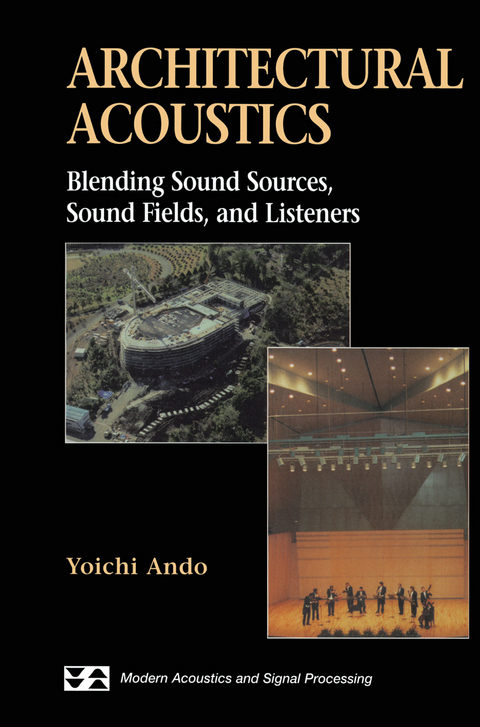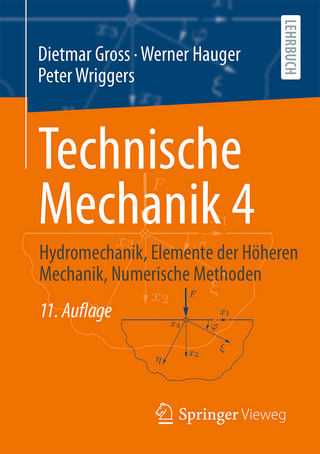
Architectural Acoustics
Springer-Verlag New York Inc.
978-0-387-98333-2 (ISBN)
1. Introduction.- 2. Short Historical Review for Acoustics in a Performing Space.- 3. Physical Properties of Source Signals and Sound Fields in a Room.- 3.1. Analyses of Source Signals.- 3.2. Autocorrelation Function of Piano Signal with Varying Performing Style.- 3.3. Sound Transmission from a Point Source to Binaural Entrances.- 3.4. Physical Factors of Sound Field.- 3.5. Simulation of Sound Field.- 4. Subjective Preference as an Overall Impression of the Sound Field.- 4.1. Subjective Preference of the Simple Sound Field.- 4.2. Orthogonal Properties of Acoustic Factors.- 4.3. Optimum Design Objectives.- 4.4. Theory of Calculating Scale Values of Subjective Preference.- 4.5. Examination of Subjective Preference in an Existing Hall.- 5. Human Hearing System.- 5.1. Physical Systems of Human Ears.- 5.2. Influence of Electro-Physiological Responses from Auditory Pathways and Human Cerebral Hemispheres Relating to Subjective Preference.- 5.3. Influence of the Continuous Brain Wave (CBW) onSubjective Preference.- 5.4. Auditory—Brain System: A Proposed Model.- 6. Important Subjective Attributes for the Sound Field, Based on the Model.- 6.1. Subjective Diffuseness and ASW in Relation to the IACC and/or theWIACC.- 6.2. Subjective Attributes of the Sound Fields with a Single Reflection in Relation to the ACF of the Source Signals.- 6.3. Loudness in Relation to the Effective Duration of the ACF.- 6.4. Speech Intelligibility and Clarity in Relation to the Temporal Factor (TF) and the IACC.- 7. Subjective Effects of Sound Field on Performers.- 7.1. Subjective Preference of Performer for Sound Field on the Stage.- 7.2. Influence of the Music Program Selection on Performance.- 7.3. Selection of the Performing Position for Maximizing Listener’s Preference.- 8. Passive Control of Sound Field by Design.- 8.1. Control of the IACC by Side Walls.- 8.2. Control of the IACC by Ceilings.- 8.3. Influence of Diffusers on Walls and Ceilings.- 8.4. Reflectors near the Ceiling.- 8.5. Floor Structure and Seating.- 9. Individual Listener Subjective Preferences and Seat Selection.- 9.1. Individual Preference According to Orthogonal Factors.- 9.2. Effects of Lighting on Individual Subjective Preference.- 9.3. Inter-Individual Differences in Preference Judgments.- 9.4. Seat Selection System for Individual Listening.- 10. Case Studies of Acoustic Design.- 10.1. Concert Hall Design.- 10.2. Multiple-Purpose Auditoria.- 11. Acoustical Measurements of the Sound Fields in Rooms.- 11.1. Binaural Impulse Response.- 11.2. Reverberation Time.- 11.3. Measurement of Acoustic Factors at Each Seat in a Concert Hall.- 11.4. Recommended Method for the IACC Measurement.- 11.5. Physical Properties of a Forest as an Acoustic Space.- 12. Generalization to Physical Environmental Planning Theory.- 12.1. A Generalized Theory of Designing Physical Environments.- 12.2. Examples of Physical Environmental Planning.- Appendix I. Method of Factor Analysis.- Appendix II. Design of Electroacoustic Systems.-II.1. The IACC of a Two-Channel-Loudspeaker-Reproduction System.- II.2. A System of Controlling Temporal Factors.- Appendix III. Time-Variant Sound Fields: Variable-Delay Time of a Single Reflection.- References.- General Reading.- Glossary of Symbols.- Abbreviations.- Author Index.
| Erscheint lt. Verlag | 10.7.1998 |
|---|---|
| Reihe/Serie | Modern Acoustics and Signal Processing |
| Zusatzinfo | XV, 252 p. |
| Verlagsort | New York, NY |
| Sprache | englisch |
| Maße | 155 x 235 mm |
| Themenwelt | Naturwissenschaften ► Physik / Astronomie ► Mechanik |
| Technik ► Architektur | |
| Technik ► Bauwesen | |
| ISBN-10 | 0-387-98333-3 / 0387983333 |
| ISBN-13 | 978-0-387-98333-2 / 9780387983332 |
| Zustand | Neuware |
| Informationen gemäß Produktsicherheitsverordnung (GPSR) | |
| Haben Sie eine Frage zum Produkt? |
aus dem Bereich


